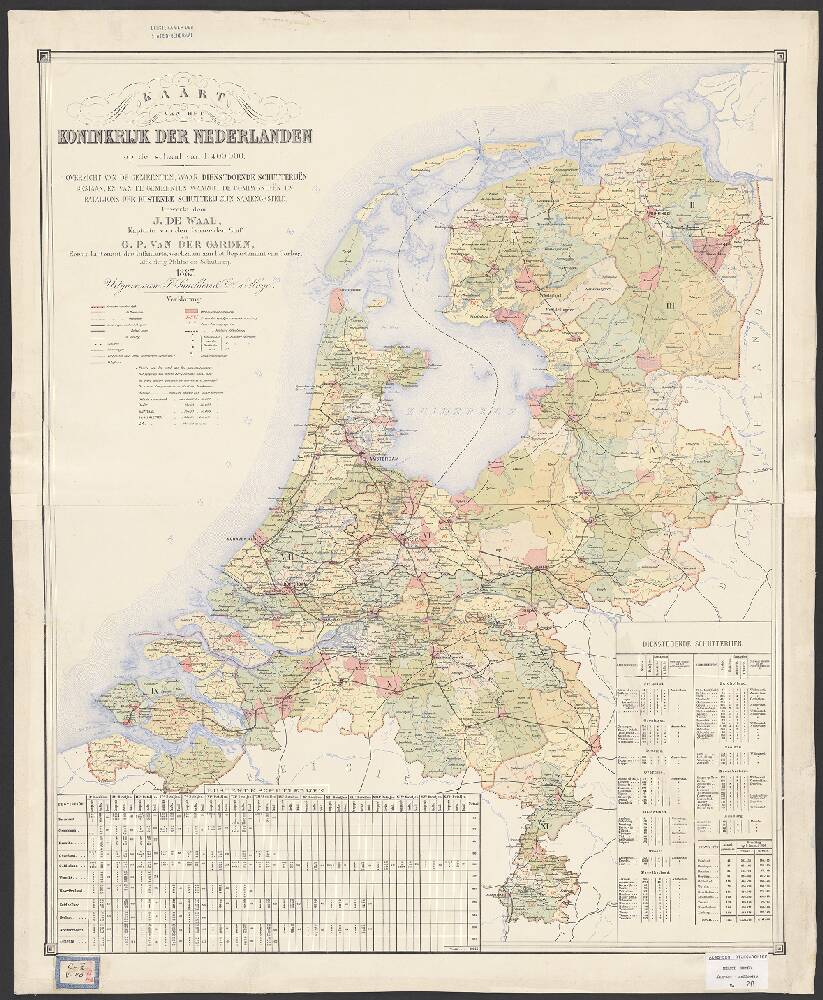This 1887 map shows the local militias (“schutterijen”) for each municipality. Local militias were responsible for the defense of the municipality in case of trouble.

Map of local militias, 1887. Credits: call no. 20, Record Group 4.EKR: Senate, Nationaal Archief (public domain).
Larger municipalities, marked with diagonal red hatching, had active local militias. The men serving in these militias would get regular training and exercises and could be called up at any time to help keep order. Other municipalities had inactive or resting militias. These men were reserves. They could be called up in times of war, but would not regularly exercise.
The map shows the municipal boundaries with light black dashed lines and the borders of military districts in thick black dashed lines. Red Roman numerals in red indicate the numbers of the battalions of the inactive militia. All municipalities in the same battalion have the same background color. Within each battalion, the borders of each company are marked with red dashes and red Arabic numerals.
The municipalities kept track of people who served in the local militias. These records are typically found in the series of records for the municipality, kept in local or regional archives.
Example: Winterswijk
Most of my paternal ancestors were from Winterswijk, on the Dutch German border, just above the list of “dienstdoende schutterijen” [active militias] on the right. The map shows that Winterswijk was part of the area defended by battalion VII of the inactive militia, which had the following companies:
- 1 and 2: municipalities of of Eibergen and Neede
- 3: municipalities of groenlo and Lichtenvoorde
- 4 and 5: municipality of Winterswijk.
The list on the bottom left shows that companies 4 and 5 of battalion VII in Gelderland consisted of 147 men. In total, 429 men served in the militia in the Gelderland battalion VII. The whole of Gelderland had 6108 men serving in inactive militias, the highest number of any of the provinces.

